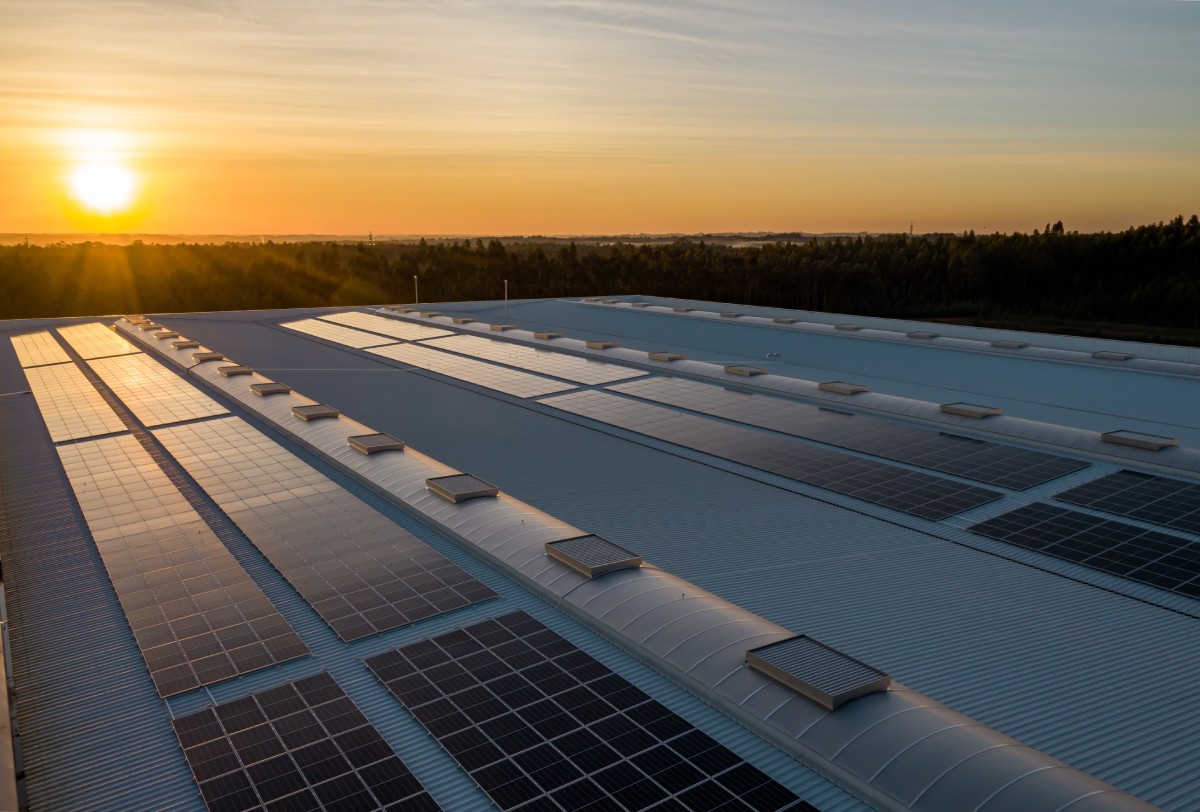Introduction
In an era where the depletion of natural resources and climate change are more than just buzzwords, the search for sustainable solutions has never been more urgent. Among various alternatives, solar energy shines bright as the future of sustainable living. Offering not only a virtually limitless supply but also the promise of minimal environmental impact, solar power presents an avenue worth exploring and investing in for everyone-be it homeowners, corporations, or governments.
The Importance of Renewable Energy Sources
Switching to renewable energy sources is no longer just an option; it’s a necessity. The harsh reality of finite fossil fuels and the environmental toll they take has heightened the need for cleaner, sustainable solutions. Renewable energies-like wind, hydro, and especially solar-offer a path to not only preserve our planet but also sustain its future. Solar energy, in particular, stands out for its simplicity and scalability, capable of powering anything from small household gadgets to entire cities.
Brief Introduction to Solar Energy
At its core, solar energy is about harnessing the sun’s rays to generate electricity or heat. It’s a technology that dates back thousands of years but has seen unprecedented advancements in recent decades. Today, solar panels are more efficient, affordable, and easier to install than ever. With ongoing R&D, the efficiency of solar cells continues to improve, promising an even brighter future for solar power. The best part? It’s a renewable resource, meaning we won’t run out of it for as long as the sun shines, which estimates suggest will be another 5 billion years.
Overview of the Post
In this blog post, we’ll delve into why solar energy is poised to be the cornerstone of sustainable living in the years to come. We’ll look at its myriad benefits-from environmental to economic-and examine how technological advancements are breaking down barriers to entry. We’ll also address common misconceptions and hurdles, and explore ways to make solar power a mainstream energy source, both for individuals and larger communities.
So, whether you’re new to the concept of solar energy or looking to deepen your understanding, stay with us as we illuminate why solar power is not just a temporary trend but a lasting solution.
In essence, the pressing need for sustainable living solutions has placed solar energy front and center. This blog aims to shed light on this promising alternative, providing you with the knowledge and insights you need to make informed decisions for a sustainable future.
What is Solar Energy?
Solar energy is not just an alternative energy source; it’s an entirely different paradigm for how we think about electricity. In its simplest form, solar energy is power harvested directly from the Sun, offering a way to capture the abundant and free energy that graces our planet every day. It’s an epitome of sustainable and renewable energy, a solution that promises both economic and environmental dividends.
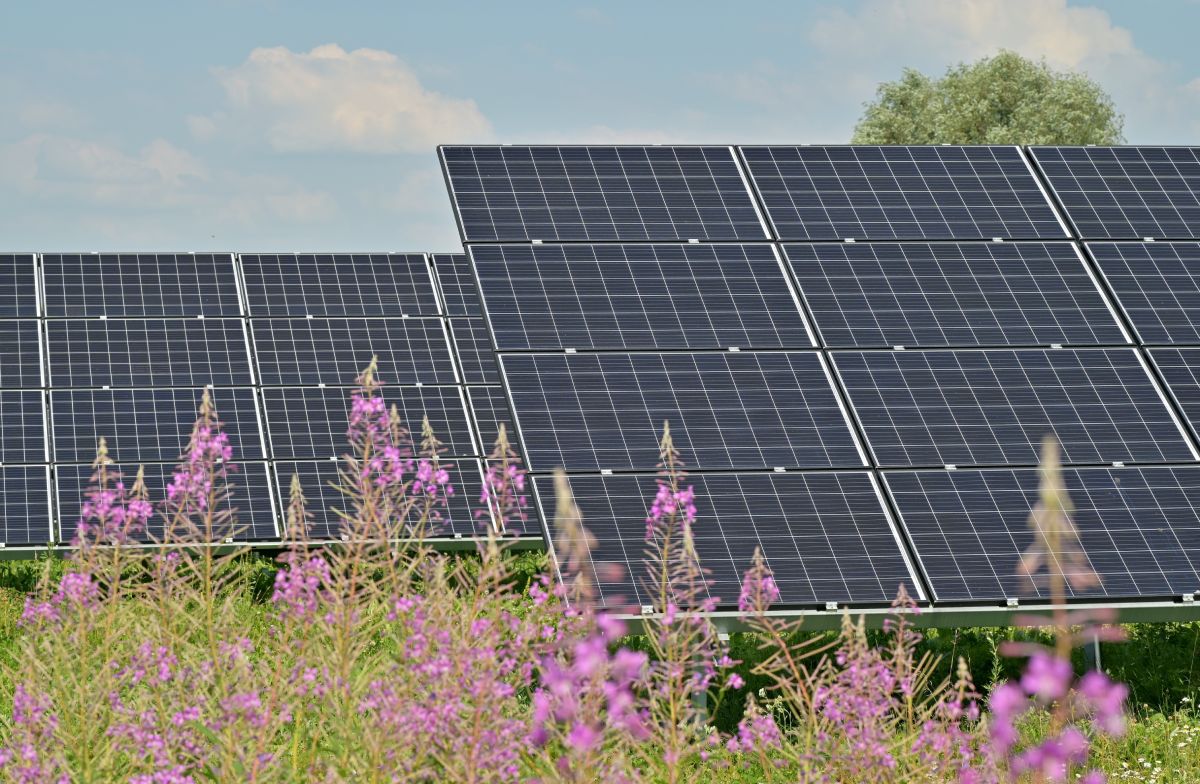
Basic Concept of Solar Energy
At its core, solar energy is all about tapping into the Sun’s immense power to generate electricity or heat. The primary method involves solar panels or photovoltaic cells that capture sunlight and convert it into electricity. These panels contain semiconductors, usually made of silicon, that absorb photons and release electrons, generating a flow of electricity. The beauty of this process lies in its simplicity and efficiency. As solar panel technology advances, we are finding ways to capture more energy with smaller and more affordable setups.
Brief History of Solar Energy
Solar energy is not a modern invention. Its origins can be traced back to ancient civilizations that used rudimentary techniques like magnifying glasses to concentrate the sun’s rays for heat. However, it wasn’t until 1839 that French physicist Alexandre Edmond Becquerel discovered the photovoltaic effect, the principle behind converting sunlight into electricity. Since then, solar technology has seen a constant evolution-from the first solar-powered calculator to advanced photovoltaic farms and even solar-powered vehicles. Significant leaps occurred in the 20th and 21st centuries, including the transition from silicon-based solar cells to thin-film technology, which has dramatically improved efficiency and reduced costs.
Various Uses of Solar Energy
Solar energy is far from a one-trick pony. Its applications are as diverse as they are beneficial. On a household level, solar power can light up homes, heat water, and even charge electric vehicles. Solar cookers and heaters provide an efficient, eco-friendly alternative to traditional methods. On a larger scale, solar farms can generate electricity for entire communities or even cities. The technology is also invaluable in remote or underprivileged areas where traditional power infrastructures are either unavailable or unreliable. Moreover, innovative applications continue to emerge, such as solar-powered desalination plants, which offer a solution to water scarcity, and solar-based hydrogen production for cleaner fuels.
So, when we talk about solar energy, we are talking about a technology that is versatile, reliable, and profoundly impactful. It transcends mere electricity generation, presenting us with myriad avenues to harness the Sun’s bounty for a more sustainable, equitable, and brighter future.
In summary, understanding what solar energy is, its historical evolution, and its diverse applications, helps us grasp why it is so pivotal for our future. As the technology matures, it becomes increasingly accessible, making it not just an alternative but perhaps the primary pathway to a sustainable and prosperous world.
Importance of Solar Energy in Sustainable Living
As the global focus sharpens on the need for sustainability, solar energy has risen to prominence as a real solution. More than just an alternative to fossil fuels, solar power offers a roadmap to a future where energy is clean, abundant, and in harmony with the natural world. In this section, we will delve into the intrinsic relationship between solar energy and sustainable living, examining how this renewable resource plays a critical role in reducing our carbon footprint and positively impacting the environment.

Relationship Between Solar Energy and Sustainable Living
Sustainability is about living in a way that meets our current needs without compromising the ability of future generations to meet theirs. It entails a balanced interaction with the environment that avoids depletion or degradation of natural resources. Solar energy perfectly aligns with this philosophy. By tapping into a source as constant and abundant as the Sun, we can meet many of our energy needs without causing lasting harm to the planet. Solar power systems can be integrated into our daily lives, from residential setups to community projects and industrial applications, making sustainability not just an ideal but an attainable reality.
Role of Solar Energy in Reducing Carbon Footprint
One of the most compelling advantages of solar energy is its potential to significantly reduce our carbon footprint. Unlike fossil fuels, which release a slew of harmful emissions into the atmosphere, solar power is remarkably clean. Once installed, solar panels generate electricity without emitting greenhouse gases. By replacing or supplementing traditional energy sources with solar power, we can drastically reduce the amount of carbon dioxide and other pollutants entering the atmosphere. For example, a single residential solar power system can save many tons of carbon dioxide from being emitted into the atmosphere over its lifetime.
Impact on the Environment
Beyond reducing our carbon footprint, solar energy also exerts a significantly lower environmental impact in other ways. It curtails the need for activities like mining, drilling, and fracking, which are detrimental to ecosystems and biodiversity. Moreover, unlike traditional power plants, solar installations don’t require water to generate electricity, thus conserving a precious resource. When you consider that water scarcity affects almost one-third of the global population, the importance of this benefit cannot be overstated. Additionally, solar power systems are quiet and don’t produce waste products, making them a non-intrusive way of generating energy that aligns well with ecological balance.
To sum up, the importance of solar energy in sustainable living is manifold. Its symbiotic relationship with sustainability philosophies, its crucial role in reducing greenhouse gas emissions, and its overall low impact on the environment make it a cornerstone in the quest for a sustainable future. As we navigate through the current climate crisis, it’s increasingly clear that solar energy is not just an alternative but a necessity for a sustainable world.
Solar Energy and Its Environmental Benefits
Solar energy isn’t merely an alternative to conventional energy sources; it’s a proactive choice for a healthier planet. By leveraging the sun’s power, we not only lessen our reliance on fossil fuels but also invest in a cleaner, more sustainable future. In this section, we will delve into the environmental benefits of solar energy, focusing on its capacity to reduce greenhouse gas emissions, conserve water resources, and minimize waste associated with energy production.
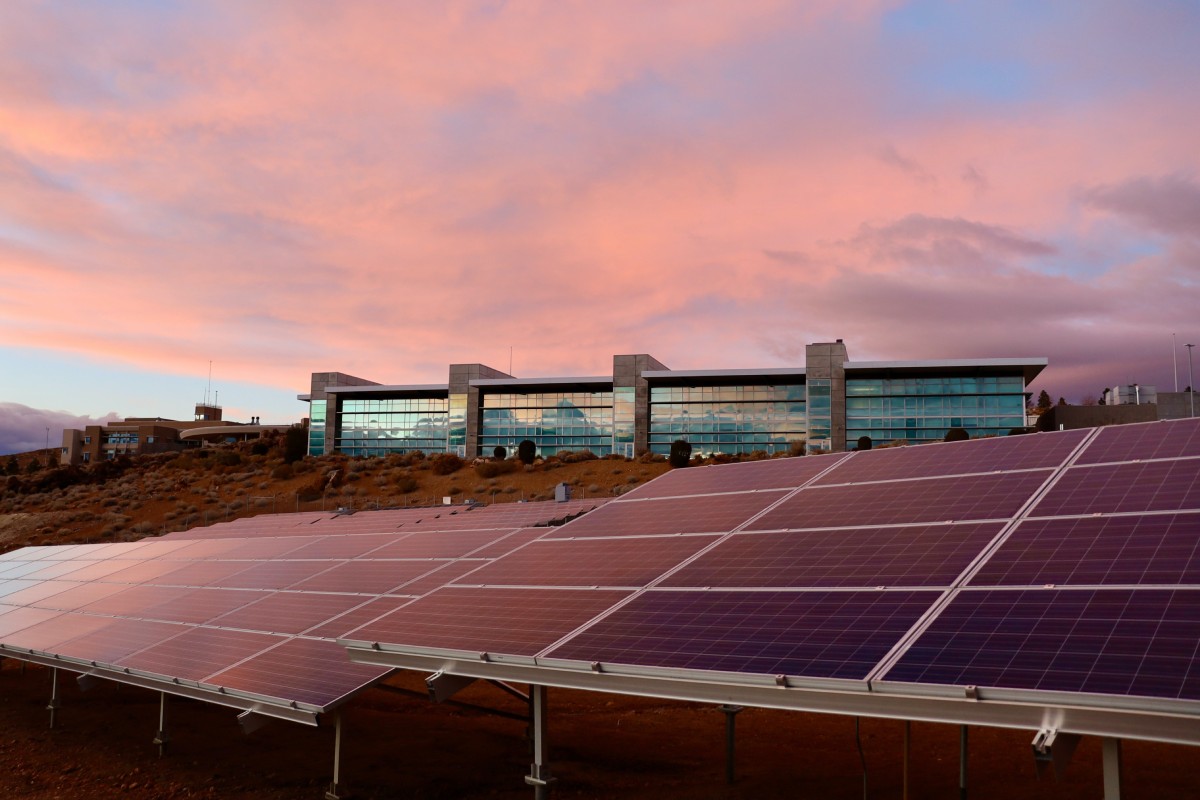
Reduction in Greenhouse Gas Emissions
Solar energy shines as a solution to one of the most pressing environmental issues we face: climate change. Unlike coal, oil, or natural gas, solar power doesn’t emit harmful greenhouse gases during operation. These gases, such as carbon dioxide and methane, are significant contributors to global warming and climate instability. When you install solar panels on your home or participate in a community solar project, you directly reduce the amount of greenhouse gases emitted into the atmosphere. This act, when multiplied across many individuals and communities, can have a profound impact on slowing down climate change.
Conservation of Water Resources
Water is a precious resource, vital to all forms of life and essential for various human activities, including energy production. Traditional electricity generation methods often consume enormous amounts of water for cooling and other processes. Solar power, on the other hand, requires no water to generate electricity. Solar panels convert sunlight directly into energy, bypassing the need for water-intensive cooling systems. This water-saving aspect is particularly critical in arid regions or places where water scarcity is a pressing issue. By opting for solar energy, you contribute to the conservation of this invaluable resource.
Reduction in Energy Production Waste
Conventional methods of energy production often produce not just greenhouse gases but also other types of waste, like ash and sludge, that pose environmental hazards. These waste products need to be managed and treated, which itself consumes additional resources and poses more environmental risks. Solar power systems generate electricity without producing waste materials. Even when considering the manufacturing and disposal of solar panels, the overall waste generated is substantially less than that of traditional energy sources. Moreover, advances in recycling technologies are making it easier to reclaim materials from old solar panels, further minimizing waste.
In conclusion, solar energy offers a trifecta of environmental benefits that align closely with the broader goals of sustainable living. It stands as a powerful tool for reducing greenhouse gas emissions, conserves water resources, and minimizes waste-all crucial factors as we strive to build a more sustainable world. These advantages make it increasingly clear that solar energy isn’t just an eco-friendly choice, but an imperative for anyone committed to environmental stewardship.
Economic Benefits of Solar Energy
While the environmental advantages of solar energy are widely acknowledged, its economic benefits are equally compelling. As solar technology has advanced, it has become not only a more accessible but also a more lucrative energy option for individuals, businesses, and governments alike. In this section, we explore the economic upsides of embracing solar energy, ranging from its cost-effectiveness to its impact on reducing energy bills and creating jobs.

Cost-effectiveness of Solar Energy
Solar energy has undergone a transformation in terms of affordability. The costs of solar panels and associated technologies have plummeted over the years, making it increasingly competitive with traditional energy sources. For instance, the price per watt of solar energy has decreased dramatically, thanks to technological innovations and economies of scale. This trend shows no signs of slowing down, making solar energy an economically wise choice for the long term. Moreover, governments and organizations often offer incentives and rebates for solar installations, making the initial investment even more attainable.
Impact on Energy Bills
For homeowners and businesses, solar energy provides an immediate and long-term reduction in energy bills. Once you’ve made the initial investment in a solar energy system, the ongoing costs are minimal. Solar panels require little maintenance and have a lifespan of 25 to 30 years, or even more. This translates to decades of reduced or virtually nonexistent electricity bills. Plus, many regions offer “net metering,” where you can sell excess energy back to the grid, effectively turning your solar installation into a small revenue generator. Over time, these savings and earnings can be substantial, more than justifying the initial setup costs.
Job Creation in the Solar Industry
Beyond individual or corporate gains, solar energy is a burgeoning industry that is creating jobs at a rapid pace. As demand for clean energy solutions grows, so does the need for skilled labor in areas like manufacturing, installation, maintenance, and research and development. The solar industry has become one of the fastest-growing sectors in many countries, offering a wide array of job opportunities for people with different skill sets. This boom in job creation doesn’t just benefit those directly involved in the solar sector; it has a ripple effect on the broader economy, driving growth and increasing prosperity.
In summary, the economic benefits of solar energy are multi-faceted and significant. From its increasing cost-effectiveness to its positive impact on energy bills and job creation, solar energy is an investment that pays off in both individual and societal terms. As we look to the future, the financial incentives for adopting solar energy are likely to grow even more compelling. This makes it not only a viable but also a financially prudent option for those interested in making both an environmentally and economically sound choice.
Technological Advances in Solar Energy
As we peer into the future of sustainable living, one thing is clear: technological innovation in solar energy is accelerating at an unprecedented rate. Breakthroughs in efficiency, energy storage, and emerging trends are reshaping the landscape, making solar power more effective and versatile than ever. In this section, we’ll delve into the key technological advancements that are fueling solar energy’s rise as a cornerstone of a sustainable future.

Evolution of Solar Panel Efficiency
Solar panels have come a long way from their early days. Today’s solar cells are incredibly efficient, thanks to advances in materials science and photovoltaic technology. For example, while early solar panels had efficiency rates around 10-12%, modern panels commonly achieve efficiencies over 20%. This higher efficiency means you can generate more energy with fewer panels, reducing the amount of space needed for installation. Researchers are continuously working on developing even more efficient materials, like perovskite solar cells, which hold the promise of substantially higher efficiency rates in the near future.
Innovations in Solar Energy Storage
The issue of energy storage has always been a significant challenge for renewable energy sources. Unlike fossil fuel-based energy, solar power generation is intermittent, relying on daylight conditions. However, advances in battery technology are overcoming this hurdle. Lithium-ion batteries and other advanced storage solutions now offer efficient and affordable ways to store excess energy for use during nighttime or cloudy days. These storage systems are becoming smarter, too, equipped with software that optimizes when to store and discharge energy based on real-time data, thereby maximizing efficiency.
Emerging Trends in Solar Technology
In addition to improvements in panel efficiency and energy storage, other emerging trends are shaping the future of solar energy. For example, bifacial solar panels can capture sunlight on both sides, increasing their energy yield. Transparent solar cells are another exciting development, potentially turning every glass surface into an energy generator-from windows to smartphone screens. Moreover, solar technology is becoming increasingly integrated with other systems, like electric vehicle charging stations that use solar power, further expanding its range of applications.
To sum up, technological advancements are significantly boosting the viability and effectiveness of solar energy. Enhanced efficiency, innovative storage solutions, and groundbreaking trends like bifacial and transparent solar cells are driving solar power into a new era. These technologies are not just incremental improvements; they are paradigm shifts that are propelling solar energy from an alternative source to a mainstream, indispensable resource. As these technologies continue to mature, solar energy will play an even more integral role in shaping a sustainable future.
Case Studies of Successful Solar Energy Implementation
There’s no better way to understand the potential of solar energy than to look at real-world examples where it has been successfully implemented. From individual residences and large-scale solar farms to entire cities and countries betting on solar, these case studies serve as shining examples of how solar energy can revolutionize our approach to sustainable living. In this section, we’ll take you through some of the most impactful stories that underline the efficacy and transformative power of solar energy.
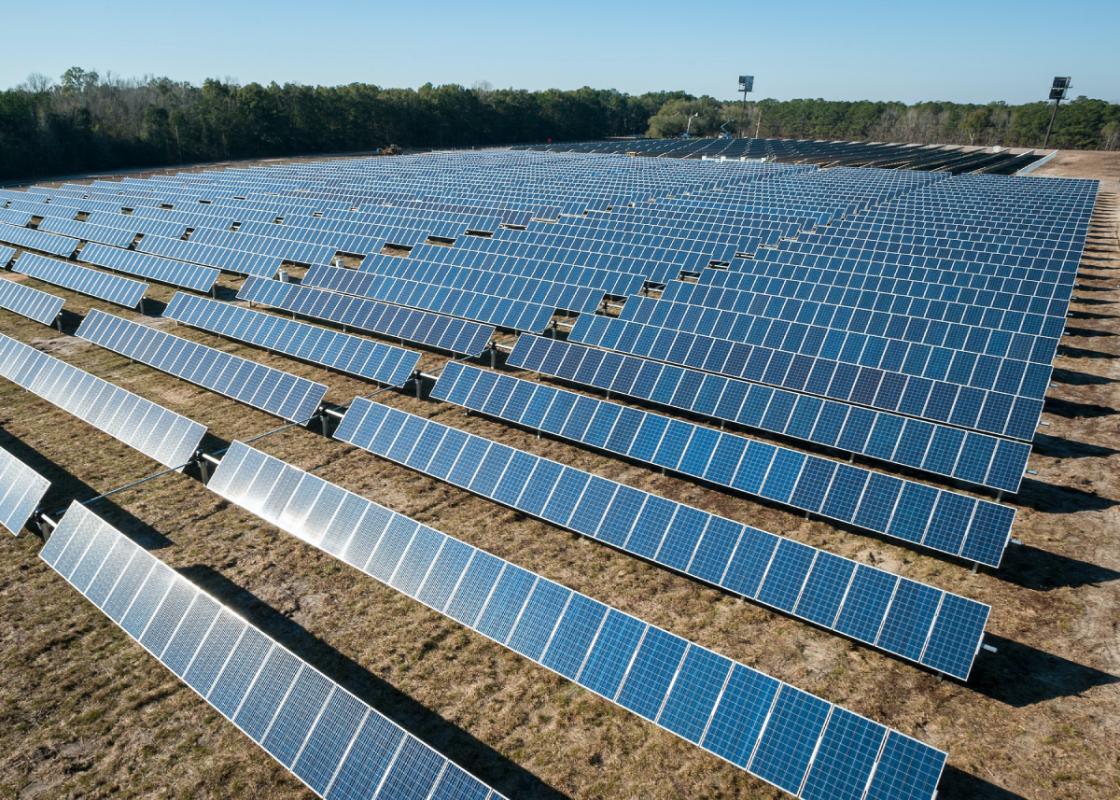
Residential Success Stories
Solar energy is making a difference at the grassroots level, one home at a time. Households around the world are installing solar panels and reaping the benefits in the form of reduced energy bills and smaller carbon footprints. For example, the Smith family in California managed to cut their electricity bills by 75% after going solar, and they’re not alone. Many homeowners are also using their solar installations as a way to give back to the grid through net metering, effectively transforming their homes into mini power plants that benefit their communities.
Large-Scale Solar Farms
If individual homes can make such a significant impact, imagine what large-scale solar farms can do. Countries like China, the United States, and India have been investing heavily in massive solar installations. One standout example is the Noor Complex in Morocco, one of the largest solar farms in the world. With a total capacity of over 500 megawatts, this solar farm provides electricity to more than a million people and contributes significantly to Morocco’s goal of sourcing 52% of its electricity from renewable sources by 2030.
Solar-Powered Cities and Countries
Cities and countries are recognizing the immense potential of solar energy and making concerted efforts to switch. Take the example of Adelaide in Australia; the city has committed to sourcing 100% of its energy from renewable sources by 2030, and solar plays a critical role in this ambition. On a national level, Costa Rica stands as a beacon. The country aims to become the world’s first carbon-neutral nation, and solar energy is crucial to this endeavor. These larger-scale initiatives demonstrate how entire communities can transition away from fossil fuels when solar energy is adopted wholeheartedly.
In summary, these case studies exemplify the real-world impact of solar energy across different scales, from individual homes to entire nations. They serve as powerful testimonials for what’s achievable when we invest in solar technology and make it a core component of our energy ecosystem. Each story, whether small or large, adds another layer of credibility to the promise of solar energy, encouraging more people, communities, and governments to take the solar plunge. As more of us become part of these success stories, we edge closer to making solar energy the cornerstone of a truly sustainable future.
Challenges in Implementing Solar Energy
While solar energy presents a myriad of benefits and opportunities for a sustainable future, it’s crucial to address the challenges that come with its widespread implementation. From economic considerations and geographic constraints to infrastructure issues, these challenges must be tackled effectively to fully realize solar energy’s potential. In this section, we’ll discuss some of the key obstacles in the path of adopting solar energy and how they can be managed.

Initial Costs and Economic Feasibility
One of the most frequently cited hurdles in the adoption of solar energy is the initial investment cost. Installing solar panels, inverters, and sometimes batteries can require significant capital. Although the costs of solar installations have drastically fallen over the years, the initial expenditure still remains a concern for many potential adopters. To overcome this, various financial models like leasing and Power Purchase Agreements (PPAs) have been developed. Moreover, many governments offer incentives and subsidies to reduce the financial burden, making it more economically viable in the long run.
Geographic and Climatic Limitations
Solar energy’s effectiveness can depend on your location on the globe. Areas with limited sunlight due to geographical or climatic conditions may find it challenging to generate sufficient electricity through solar means. Think of places with long winters or those that experience frequent cloud cover. Advances in solar technology are mitigating these challenges by creating panels that can function more effectively under less-than-ideal conditions. Additionally, integrated solar systems that combine solar power with other forms of renewable energy can help address these limitations.
Infrastructure and Grid Compatibility Issues
Solar energy is not a plug-and-play solution; it requires substantial modifications to existing electrical infrastructure in many cases. For instance, older electrical grids may not be equipped to handle the variable nature of solar energy. This can lead to grid stability issues. Solutions such as smart grids and advanced inverters are being developed to tackle these compatibility challenges. Furthermore, centralized systems often require a complete overhaul to integrate renewable energy sources effectively.
Policy and Regulatory Hurdles
Although not part of the original outline, it’s worth mentioning that policy and regulatory environments can also be a significant challenge. Without supportive policies, implementing solar energy becomes an uphill battle. Fortunately, public sentiment is shifting, and many governments are now creating frameworks that encourage the adoption of renewable energy sources, including solar.
In conclusion, while solar energy is overwhelmingly positive in its promise for a sustainable future, it does come with its set of challenges. Acknowledging these challenges does not diminish solar’s potential but rather frames a realistic pathway for its broader adoption. As technology advances and policy landscapes evolve, we can expect these challenges to be addressed more comprehensively, making solar energy an even more compelling option for sustainable living.
Future Prospects of Solar Energy
As we gaze into the future, solar energy stands out as a beacon of hope and potential for a more sustainable world. However, realizing this future requires a balanced look at industry growth projections, upcoming technological advancements, and the evolving landscape of policy and legislation. In this section, we will explore these aspects to provide a rounded perspective on what the future holds for solar energy.
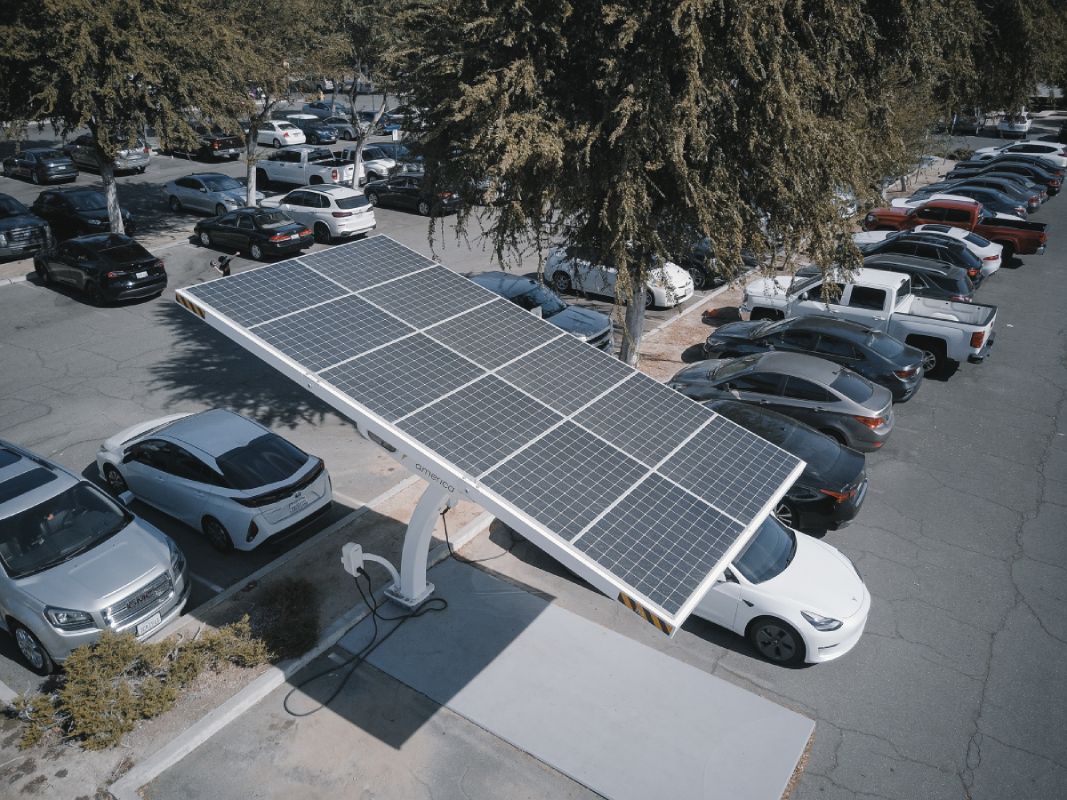
Predicted Growth of the Solar Industry
The solar industry has experienced tremendous growth in the past decade, and all signs point to this trajectory continuing. Industry experts project that solar energy could account for as much as 20% of global electricity generation by 2030, up from around 3% today. This growth isn’t just speculation; it’s driven by hard facts, such as increasing efficiency, falling costs, and a worldwide push for cleaner energy solutions. As more countries commit to reducing their carbon footprint, the demand for solar installations-both residential and commercial-will likely soar.
Upcoming Technological Advancements
Technology serves as the catalyst for the growth of any industry, and solar energy is no exception. Upcoming advancements promise to make solar panels more efficient, cheaper, and more accessible. For example, scientists are working on perovskite solar cells, which have the potential to be both cheaper and more efficient than existing technologies. Furthermore, innovations in energy storage solutions, like improved battery technologies, will address one of solar energy’s main drawbacks: its intermittent nature. This means that not only will solar energy become more efficient but also more reliable.
Solar Energy and Artificial Intelligence
While not explicitly in the original headings, it’s worth noting that artificial intelligence (AI) is beginning to play a significant role in optimizing solar energy systems. From predictive maintenance to more efficient grid management, AI could be a game-changer in how we harness and distribute solar energy.
The Role of Policy and Legislation
The future of solar energy is not solely dependent on technological innovation; it also hinges on the policies and legislation that govern its adoption. Governments worldwide are beginning to recognize the value of solar energy, both for its environmental benefits and its potential to create jobs. Legislation that encourages solar panel installations, provides subsidies, and facilitates grid compatibility will be crucial in steering the course of solar energy’s future. Without a supportive policy environment, even the most advanced technologies might struggle to find their place in the sun.
In summary, the future prospects for solar energy look exceedingly bright. Fueled by technological innovation, nurtured by favorable policies, and driven by an ever-increasing global demand for clean energy, solar stands to play a defining role in our sustainable future. While challenges exist, the collective efforts from industry stakeholders, policymakers, and consumers can help overcome them, paving the way for a world where solar energy isn’t just an alternative but becomes the norm.
Conclusion
As we approach the end of our journey through the multifaceted world of solar energy, it’s important to look back and distill what we’ve learned. But more importantly, it’s time to look ahead, envisioning a future where solar energy is not just a promising alternative but the backbone of global energy systems. In this concluding section, we will summarize the monumental role of solar energy in fostering sustainable living, urge you to consider implementing solar energy in your own life, and reflect on how this marvelous technology is shaping the sustainable future of our planet.

Recap of Solar Energy’s Role in Sustainable Living
Solar energy transcends the boundary between an emerging technology and a life-altering revolution. From its role in reducing greenhouse gas emissions to its endless applications in our daily lives, solar energy has proven itself as a cornerstone for a sustainable future. We’ve explored its environmental benefits, from water conservation to waste reduction, and its economic advantages, like cost-effectiveness and job creation. Its technological advances, from increasingly efficient solar panels to smarter energy storage solutions, signify that we are on a threshold of an era where solar energy could meet a significant proportion of our energy needs.
Encouragement for Readers to Consider Solar Energy Options
To all readers, this isn’t just a hopeful discourse on an idealistic future; it’s a call to action. Solar energy is more accessible and affordable than ever before. Whether you’re considering solar-powered gadgets, rooftop installations, or even advocating for solar farms in your community, there is something everyone can do to contribute. By taking steps to adopt solar energy, you are not just reducing your carbon footprint; you’re also joining a global movement toward a cleaner, healthier, and more equitable world.
Don’t Wait for Tomorrow
While it’s tempting to wait for even better technology or more favorable policies, remember that the best time to adopt solar energy is now. The sooner we transition to cleaner energy, the more profound our impact on the planet and future generations.
Final Thoughts on the Impact of Solar Energy on the Future of Sustainability
As we’ve seen, solar energy is more than just a temporary trend or a token solution for appeasing the environmentally conscious; it’s a catalyst for profound change. We are at a pivotal moment in history where our choices will dictate the health and viability of our planet for generations to come. Solar energy offers us a path to escape the devastating effects of fossil fuel dependency and leads us toward a future defined by sustainability, equity, and collective well-being.
In closing, solar energy is not just a topic of discussion; it’s a transformative force in our lives today and will likely be the cornerstone of global sustainability efforts tomorrow. Let’s embrace it, promote it, and, most importantly, let’s implement it. The sun has been shining down on us for billions of years; it’s high time we fully harness its potential for the greater good.

